ATA EXPO 2023 Delivers Smart Solutions to Textile Technology
The Advanced Textiles Association’s (ATA) annual expo attracts national and international exhibitors, conference speakers and delegates to become a barometer for innovation in advanced and smart textiles. Held in a rotation of around half a dozen cities in North America, the ATA EXPO 2023 was held in Orlando, Florida. Co-located with the Sun Shading EXPO, the events attracted 4,517 attendees with 375 exhibitors from North America, Europe and Asia. This year, space, wearables and medical market’s dominated, with many exhibitors (particularly e-textile) serving all three sectors.
NASA are regular exhibitors and speakers at the ATA EXPO, but this year the discussion on space was much broader because of the growth of the commercial space sector. There was a long list of stakeholders represented either as speakers, exhibitors or both: Axiom Space, Columbia Sportswear, Bally Ribbon Mills, Kuraray America and Aegis Aerospace all participated.
The Space Foundation’s Q2 report for 2023 provides some insights on this. The U.S. government space budgets the report puts at $69.5B, against a non-U.S. government budget of $49.1B, citing a growth rate of 8%. Commercial infrastructure and support industries are valued at $139.6B, a figure surpassed by the commercial space products and services at $288B. “The Space Report forecasts continued growth in the space economy, and based on our conservative modelling, we anticipate nearing the $800 billion mark within five years,” according to Thomas Dorame, senior vice president at Space Foundation. “This forecast is bolstered by the increase in 2023 space launch activity, which is well on pace to surpass the annual record set in 2022.” The commercial space sector growth is impacting the number and range of stakeholders, in addition to the new performance demands it brings.
Speaking of Space
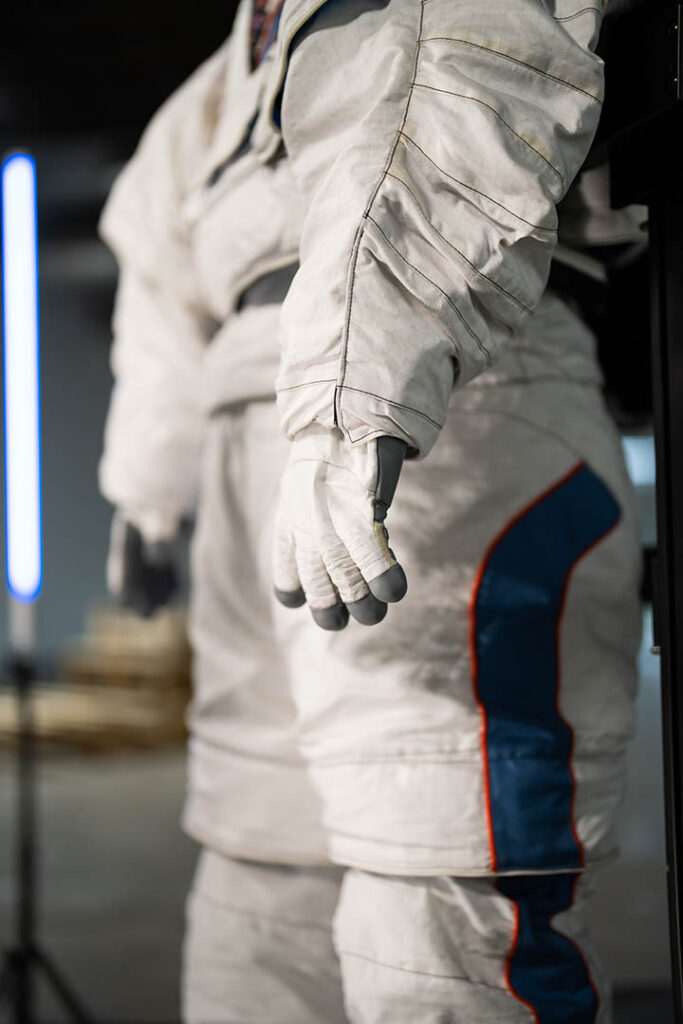
Haskell Beckham, Vice President of Innovation at Columbia Sportswear chaired a very lively panel discussion titled “Advanced textiles – a new frontier and new opportunities.” The panelists were Chyree Batton, Commercial Innovation Strategy Lead for in-space solutions and manufacturing at Axiom Space, Matthew Reid, Industrial Market Manager Vectran Fiber Division, Kuraray America and Jason Smith, Customer Solutions and Business development Lead, Aegis Areospace Inc. The focus was on the opportunities offered by the space industry and some of the challenges faced by textile in the extreme environment – from temperatures that can plummet to -193 Celsius, to solar dust that require ballistic-level protection by materials exposed to it.
Clear from the discussion was the interconnections of the stakeholders, from spacesuit design and manufacture, new fibers and fabrics, to material testing that needs to be carried out in the unique environment of space and ultimately looking towards manufacturing in space. Chyree Batton actively reached out to the audience for new fibers, fabrics that might provide solutions that might be used for Artemis III and beyond.
Fashioning Tech
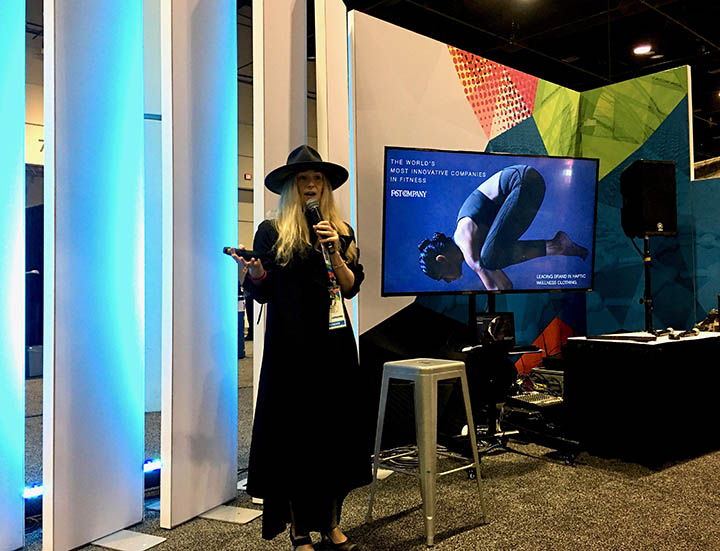
Wearables and e-textiles were another key focus. Billie Whitehouse, CEO and Creative Director of Wearable X shared her experience of working collaboratively to take concepts through to production. She looks to make haptic technologies as invisible as possible, using vibration embedded in the clothing as a primary interface with the wearer.
Her Nadi X Yoga pants integrated the hardware into the pants that is then linked to a smartphone to provide both audio and visual guidance with pose confirmation software. Accelerometer and Gyro sensing is used for orientation and performance analysis that includes an evaluation of repetitive motion, with haptic guidance being provided in real time.
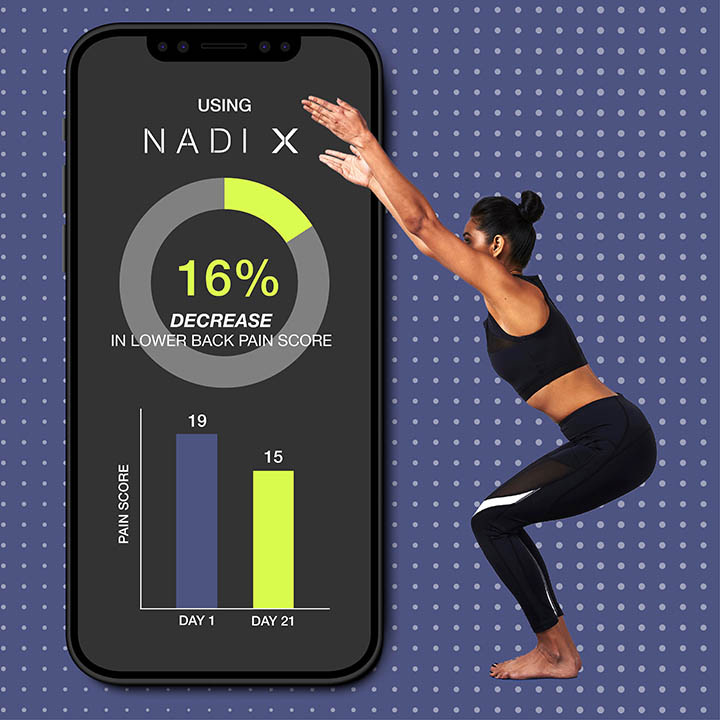
Ms. Whitehouse shared her guiding principle when working with wearables “Do not put the tech before the human experience.” In the next stage of development, the yoga clothing process is being used as the basis for the design of physical therapy garment to reduce lower back pain. This is currently being tested in a pilot study.
Doctoring Textiles
Health, wellness and medical were important markets on the show floor. NC State’s ASSIST Center is directed at the creation of self-powered sensing, computing, and communication systems to enable data-driven insights for health and wellbeing. The approach is multidisciplinary, bringing together academic researchers, practitioners and industry partnerships. The result is an environment that places a high value on innovation bringing together education and outreach.
Celebrating the center’s ten-year anniversary, the approach is clearly successful, generating 53 patents, filing 90 inventions, 10 spin-off companies, graduating 105 PhDs and publishing over 650 papers. The post-pandemic shifts are noticeable as the medical and healthcare industry is placing greater emphasis on continuous monitoring of patients.
There are several reasons for this. One is the move away from a lab or hospital environment so that a more accurate picture of patient’s movement and activities can be attained as they move around with greater freedom. A second reason is the shift towards care in the home with shorter hospital stays and fewer visits. Providing power to such wearables is one of the questions that ASSIST is addressing.
In one effort, research of a self-powered smart shoe insole energy harvester is being developed for use in applications in which data on patient gait, balance, and activity are required as indicators of disease progression, severity and falls risk. Patient falls are a significant factor, where in the U.S. alone they are resulting in more than 3m trips to hospital emergency rooms each year, with around 28,000 fatalities and an estimated cost of $50B.
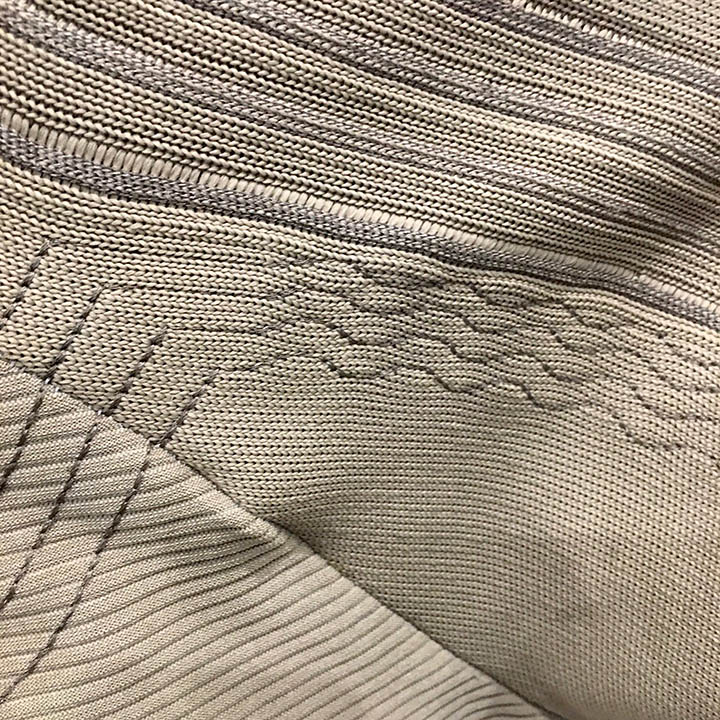
Furthermore, Advanced Functional Fabrics of America (AFFOA) showcased a number of new developments at their booth that reinforced Dr. Sasha Stolyarov’s emphasis during his conference presentation on achieving scale, integration of technologies and collaboration between stakeholders. They are also addressing design and construction issues, for example, where conductive elements need to cross seams. The garment construction can use a relatively thick fabric that creates an obstacle or break in conductivity.
Coupled with this is the growing demand that wearables address environmental impact, considering repair and design for disassembly. The challenge becomes not just designing for performance and comfort, but repair and end of life also. Technology is central, but design and construction are playing an increasingly important role in finding a solution to this global problem.
Yarn Tales
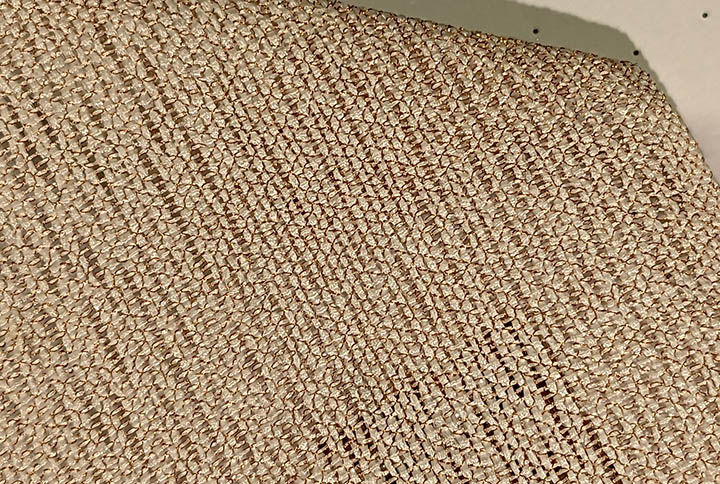
The German Institutes of Textile and Fiber Research Denkendorf (DITF) have developed both e-yarns and conductive print processes. In conventional sensory yarns a helical process is used to wrap the fine wire or wires around the yarn.
In a new development, the wrapping of yarns with different capacitive-sensory areas within a yarn were investigated. What this achieves is an ability to identify the location where the yarn has been touched. This has been achieved by a kiss-roll coating method where the yarn is raised and lowered in order to prevent sections of the yarn from being coated. Another method uses a roller with partial recesses to achieve the effect, while a third process uses digitally controlled nozzles for the application of water-based solutions.
The result is yarns that can be fully or partly uncoated or have a low level or full coating that makes the whole process very flexible. During the fabric manufacturing process, the sensory yarns are positioned to run towards each other. When they are touched or loaded the signals can be picked up and assigned to a specific area in the textile. This allows for very complex contact and load patterns to be used, and importantly for production, knit, weave and e-broidery machines can use the yarn while running at conventional speeds.
In a collaborative research project with dp-solutions, GSB-Wahl and ilm Ulm funded by the state of Baden Württemberg, the DITF are developing a new process for conductive printing. The novel aspect lies in the combination of digital printing with laser sintering and inks that are easily pyrolyzable, the inks in this form making it possible to print digitally in a way that is economical. A further saving is made by the elimination of multiple printing and a move to less expensive metals rather than silver. The result of this is a thin, flexible and highly conductive film that can then be used as low resistance conductor paths and for making an electrical contact.
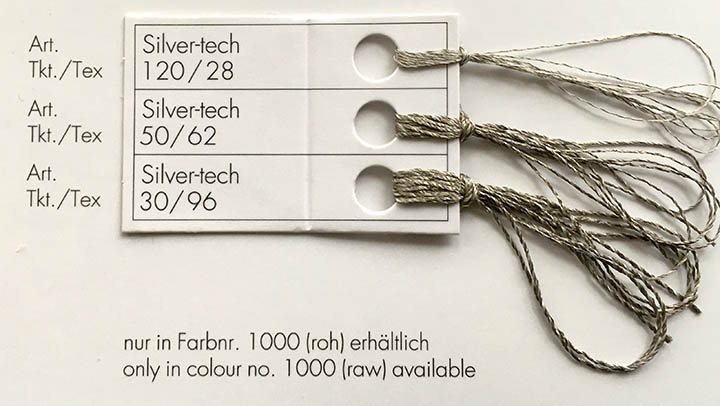
Amann and Syscom were both showing advances in their range of conductive thread and yarn. The Amann Group were founded in 1894 and specialize in the manufacture of high-quality performance and smart sewing thread and yarn. The AMANN Innovation Lab was set up as a think tank to develop new innovative products across disciplines so that it includes e-sewing and embroidery threads as well as smart surfaces. These include Silver-tech and Silver-tech+ threads. Silver-tech is a silver coated polyamide/polyester hybrid thread for use in conductive seams and surfaces. Silver-tech + is a silver coated polyamide that offers maximum conductivity with a fully conductive (100% silver) surface.
Applications for both include conducting sensing and in seam positions that require antimicrobial properties in smart textiles including medical. The company also produces Steel-tech, a stainless steel and polyester hybrid thread for use in heating applications as well as Radio Frequency Identification (RFID) antennas and as a multifunctional smart yarn for embroidery, knit and weave. Applications here include automotive interiors such as heated car seats. The Bekinox stainless steel polyester/polyamide thread contains an inox component that provides protection against oxidation and is used in applications such as workwear to help protect the worker by dispersing electrical or static charge.
ATA EXPO 2023 attracted 4,517 attendees with 375 exhibitors from North America, Europe and Asia.
Syscom fully specializes in the manufacture of conductive fibers based on a process of metal-coating. These are used across a range of applications including space, industrial, military, commercial and medical markets. Weight is a factor for many applications and a primary reason, along with cost and flexibility, for using a hybrid fiber. The Liberator is the most lightweight conductive fiber produced by Syscom and uses a Vectran fiber core to provide a good strength to weight ratio as the fiber core that can be coated with silver (Ag), copper (Cu), and Nickel (Ni). Lyofil uses Toyobo’s Zylon polyphenylene benzobisoxazole (PBO) fiber as its core with an outer layer of conducting metal. It offers a higher break load and level of fatigue resistance than Liberator. AmberStrand also uses a PBO fiber core and used as a braided electromagnetic (EMI) shielding offering a weight saving up to 87% according to manufacturers. It is used in applications such as aerospace and defense.
ATA EXPO 2024 is being held in Anaheim, California, September 24-26. New in 2024 will be a merging of the Smart Fabrics Summit with the Emerging Technologies Conference, indicating an even stronger presence of smart textiles throughout the show. Visit https://advancedtextilesexpo.com for more information.


